Will increase speed from 80 km/h to 90 km/h
Answering the question of delegate Tran Quang Minh: "Why do many completed and operational expressways only allow a maximum speed of 80 km/h?", Minister of Transport Nguyen Van Thang said that Vietnam currently has expressway design standards with 4 speed limits of 120 km/h, 100 km/h, 80 km/h and 60 km/h. Many routes, if invested in synchronously and completely according to the planning, can run at a maximum speed of 120 km/h, such as the Ha Long - Mong Cai and Hanoi - Hai Phong routes. The maximum speed on each route is regulated according to different technical factors. For example, the Phap Van - Cau Gie route has a maximum speed of 100 km/h, but the Cau Gie - Ninh Binh route is 120 km/h. The reason is that just adding the roughness factor can increase the maximum speed from 100 km/h to 120 km/h.
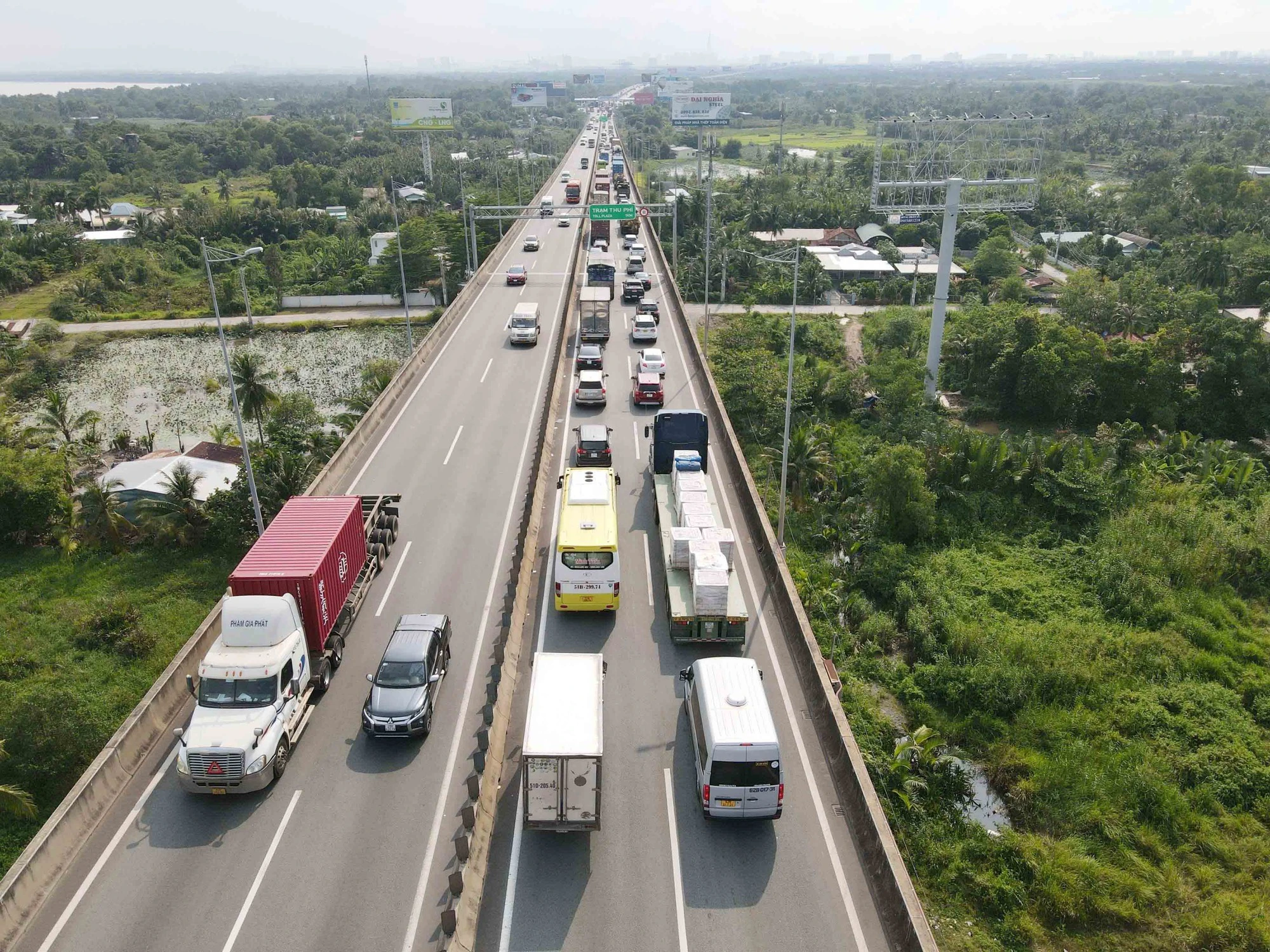
Highways turn into "slow speeds" because of few lanes and frequent traffic jams
Regarding the question: "Realizing the shortcomings in speed on the highway system, since the beginning of 2023, the Ministry of Transport has conducted a study to review whether the standards are suitable for reality or not? The research results show that the routes currently regulated at 80 km/h can be increased to 90 km/h", Minister Nguyen Van Thang said: "The Ministry of Transport has adjusted the highway design standards and is expected to change the maximum speed limit on routes from 80 km/h to 90 km/h in the first quarter of 2024".
The information about increasing the speed limit on the highway immediately received strong support from drivers. Regularly traveling on the Ho Chi Minh City - Trung Luong highway to return to his hometown in Dong Thap, Mr. Le Van Hai (residing in Nha Be district, Ho Chi Minh City) likened it to "paying for the highway, driving at the speed of a village road". When it was first put into operation, Mr. Hai was very excited because according to planning information, this route was a type A highway, with a design speed of 120 km/h, helping to shorten the travel time from Ho Chi Minh City to Tien Giang to only about 30 minutes, instead of 90 minutes as before. However, before he could enjoy the feeling of "our car speeding on the road", the Ministry of Transport decided to reduce the maximum speed on this route from 120 km/h to 100 km/h, and the minimum speed from 80 km/h to only 60 km/h because of frequent accidents on the route.
"Slower than the national highway. Usually when there is traffic jam, on the main route you can only drive about 60 - 70 km/h, but there are times when it is clear, you cannot drive faster because the highway only allows 80 km/h. For 7-seat cars, new cars, this speed is very slow. Even on newly opened routes such as Vinh Hao - Phan Thiet or Nha Trang - Cam Lam, I see that the maximum speed is only 80 km/h and the minimum speed is 60 km/h. Drivers just hope to drive according to the highway standard of 100 - 120 km/h, but with the current situation, even 90 km/h is already very good," said Mr. Le Van Hai.
Supporting the decision of the Ministry of Transport, Mr. Le Trung Tinh, Chairman of the Ho Chi Minh City Passenger Car Transport Association, analyzed: Regarding technical factors, there are 3 concepts of "speed" for motor vehicles: technical speed, operating speed and economic speed. In which, technical speed is the vehicle's operating speed as prescribed by the manufacturer. For new car models today, drivers can sometimes "jump" to 80 - 90 km/h as soon as they touch the accelerator pedal. Driving normally on large, spacious roads with green median strips in the middle such as Vo Van Kiet Street (Ho Chi Minh City) with a speed limit of 60 - 70 km/h as it is now is already difficult, if driving on the highway and holding the accelerator at a low speed, technical handling will be even more difficult.
The operating speed is the actual speed at which the vehicle is allowed to run. This index must also be calculated to suit the vehicle type according to the technical speed. If the road is clear or there are few people at that time but the vehicle must run slowly, it will not only consume a lot of energy of the vehicle, causing environmental pollution, but also causing congestion and traffic jams. In addition, there is the economic speed factor, calculated based on the factor that the vehicle takes a long time to run, consumes a lot of fuel, and increases costs for the traveler.
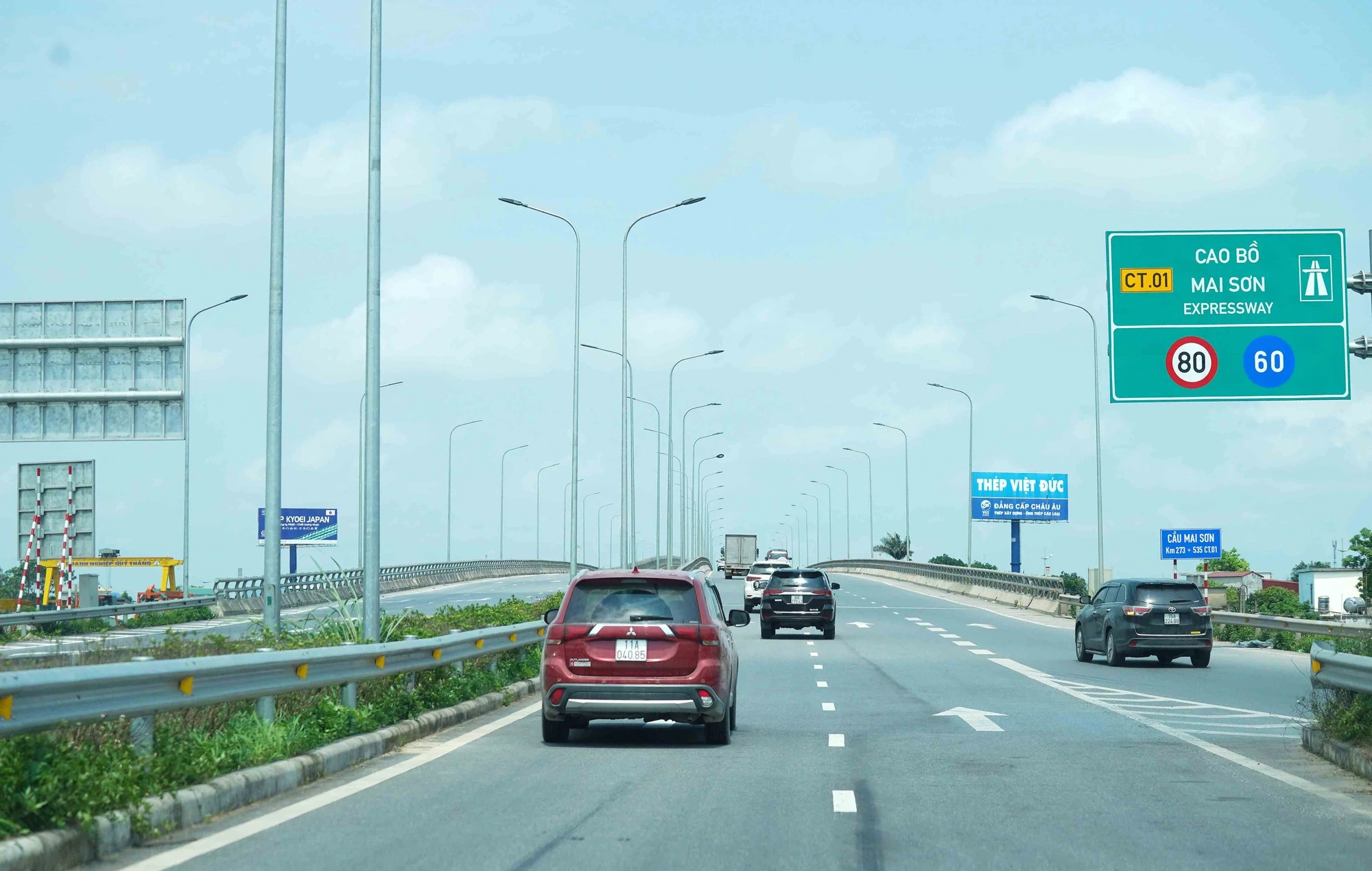
It is expected that in the first quarter of 2024, the maximum speed limit on expressways will be changed from 80 km/h to 90 km/h.
Why can't I run 100 - 120 km/h?
Regarding the basis for increasing the speed to 90 km/h, the Vietnam Expressway Administration said that according to Vietnamese and international standards, there are two types of speed: design speed and operating speed.
Design speed is used to calculate the main geometric technical standards of the road in case of difficult terrain. This speed is different from the allowable speed. The allowable speed depends on the actual condition of the functional road of the route, the terrain, the technical condition of the road and the climate, weather, traffic conditions and is determined and selected during the organization of operation and exploitation of the routes. At the same time, it is regularly evaluated to adjust and select appropriately for each exploitation stage.
Standard 42:2022/TCDBVN also stipulates: During the phase of the expressway, it is acceptable to limit the permitted operating speed lower than the speed of the future expressway (when it has been fully constructed). The selection of the operating speed will be decided by the competent authority in the traffic organization plan. The permitted operating speed depends on the actual condition of the road, weather conditions, and traffic conditions. In all cases, the maximum operating speed should not exceed 90 km/h. Therefore, the study and consideration of increasing the maximum permitted speed during the operation of expressways during the phase of 4-lane limited and intermittent emergency stop lanes from the maximum permitted speed of 80 km/h to the maximum permitted speed of 90 - 100 km/h has a scientific, theoretical and practical basis.
According to Mr. Le Trung Tinh, limiting vehicles to run slower is more wasteful. However, with the current reality in Vietnam, increasing the speed too high like in foreign countries is also not okay. "It cannot be denied that Vietnamese people do not obey traffic laws as well as foreigners. Not to mention the infrastructure and structure of our current highway system are not up to standard. Highways have too few lanes, no emergency lanes, no rest stops... Therefore, increasing the speed limit to 90 km/h, in my opinion, is reasonable," Mr. Tinh stated his opinion.
However, Associate Professor Dr. Pham Xuan Mai (former Head of the Department of Traffic Engineering, Ho Chi Minh City University of Technology) said that even if the maximum speed is increased to 90 km/h, this is not the ideal speed of a modern highway. He said that the speed of the highway depends on traffic volume, construction quality, and weather. Normally, the maximum speed of highways in countries is regulated at about 130 - 150 km/h, and in bad weather, it can be adjusted down to 80 - 90 km/h. The speed of 60 - 80 km/h or even up to 90 km/h is only the speed on national highways. Thus, the highways opened with the purpose of increasing productivity and transport volume will not be possible.
Associate Professor, Dr. Pham Xuan Mai (former Head of Department of Traffic Engineering, Ho Chi Minh City University of Technology)
"On what basis, what solution does the Ministry of Transport have to increase the speed limit to 90 km/h? On the same road, with the same standards and conditions, why did they previously only allow vehicles to travel at a maximum speed of 80 km/h, but now they increase it to 90 km/h? If it can be increased to 90 km/h, can it be increased to 100 - 120 km/h? The Ministry of Transport needs to have a convincing rationale to explain this decision," Dr. Mai asked.
To achieve ideal speed, need standard highway
Citing the latest accident on November 8, an ambulance crashed into the back of a traffic police patrol car on the Trung Luong - My Thuan expressway, injuring one person and causing the entire route to be congested for hours, Associate Professor, Dr. Pham Xuan Mai pointed out the problem: Vietnam's expressways do not allow vehicles to go too fast, but accidents still occur frequently, leading to serious congestion. The reason is that most expressways that have been and are being built are congested in 4 two-way lanes, without emergency lanes but instead are replaced by emergency stops, with the reason being that they are built in 2 phases.
The Ministry of Transport cited insufficient resources as the reason for having to divide the investment in the expressway into several phases. However, Mr. Mai assessed that the plan to "cool down" the cash flow by building small-scale roads with few lanes was not suitable. Because it was built in two phases, most of the expressways in phase 1 were limited to two lanes, without basic technical infrastructure such as emergency lanes, rest stops, etc., making it impossible for vehicles to run at the ideal speed on the expressway. The current traffic volume on Vietnam's major roads is 25,000 - 35,000 vehicles/day and night, but the number of lanes being built for the expressway is currently only two lanes designed with a traffic volume of 25,000 vehicles/day and night. Therefore, during rush hour, holidays, Tet, etc., they are all overloaded, causing serious traffic jams. Meanwhile, vehicles in circulation may break down at any time and cannot continue to an emergency stop due to technical reasons as well as traffic safety reasons. In particular, when doing 2 phases, when constructing phase 2, it will immediately cause difficulties for traffic circulation on the expressway section of phase 1, wasting 2 times the mobilization of construction resources, site clearance, etc.
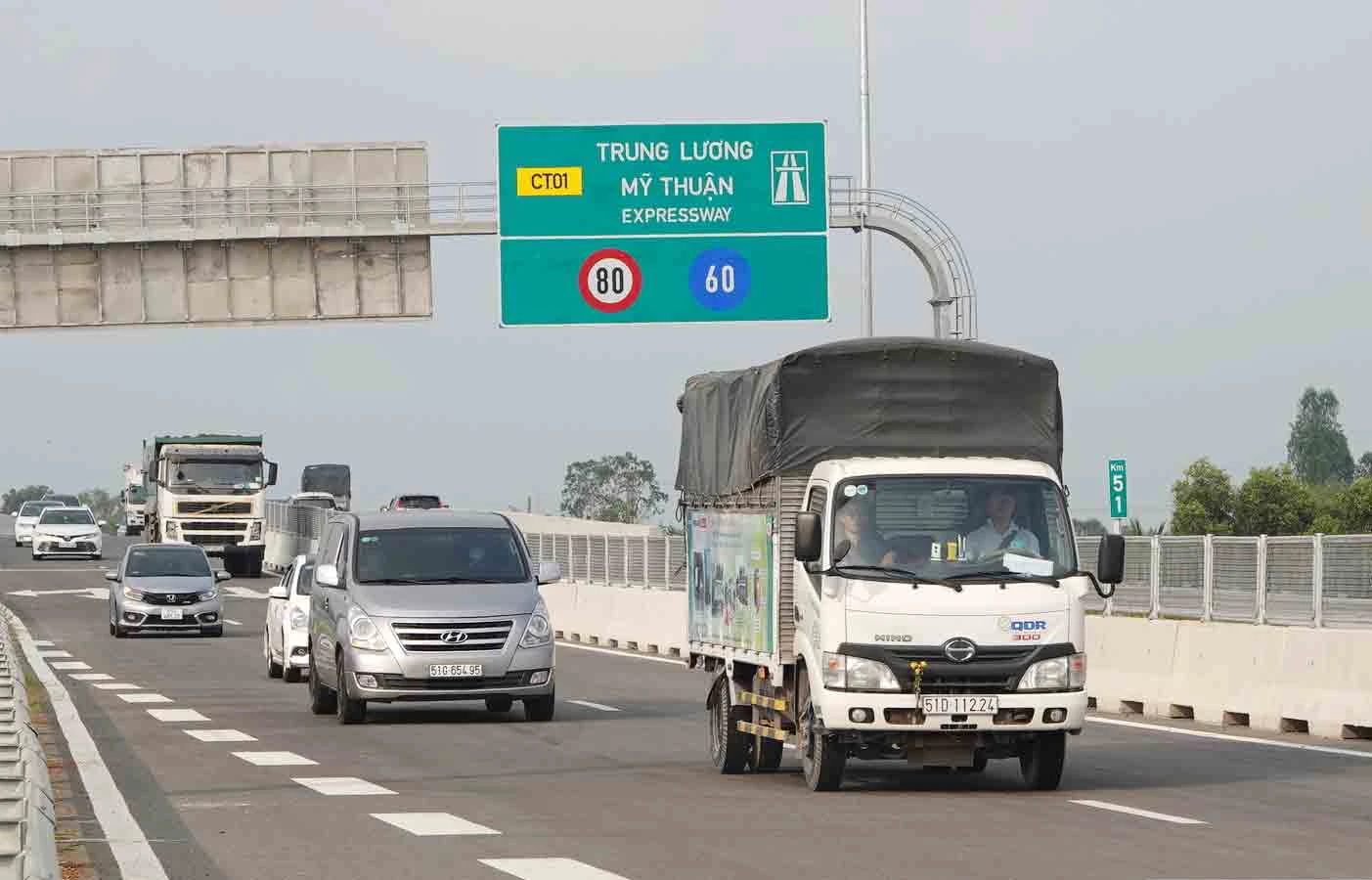
It is expected that in the first quarter of 2024, the maximum speed limit on expressways will be changed from 80 km/h to 90 km/h.
"Expressways should only be built in one phase, with priority given to national and regional backbone routes. The number of lanes on the expressway depends on the traffic volume on the route. The number of cars per 1,000 people in Vietnam is currently at 50/1,000, equal to 1/5 - 1/6 of Thailand. In the very near future (2025 - 2030), the number of cars in Vietnam will increase very quickly, at least equal to Thailand today. That means the traffic volume on expressways will also increase, up to over 75,000 cars/day and night or higher. Therefore, expressways being designed and constructed must also be calculated according to this traffic volume, meaning the minimum number of lanes for each direction is 3 lanes. When bidding, a dossier must be developed including technical standards, plans, investment rates... appropriate, comparable to international standards. Only contractors that meet all conditions will be awarded. "Bidding", Associate Professor, Dr. Pham Xuan Mai proposed.
Will diversify highway investment with principles
Many developed countries such as the US, South Korea, and Japan have to carry out investment phasing (investment in expressways without emergency lanes) for expressways. Based on the experience of other countries, the Ministry of Transport has researched and reported to competent authorities to carry out investment phasing according to principles to ensure meeting requirements in the context of limited resources, but also creating premises and convenience in the later stage when resources are available for upgrading. Accordingly, firstly, it is necessary to prioritize complete investment for sections with high transport demand. Many sections have been fully invested: Hanoi - Hai Phong, Ben Luc - Long Thanh, Phan Thiet - Dau Giay, Bien Hoa - Vung Tau. Second, for routes with low transport demand, investment phasing is carried out. Third, investment phasing is only done in terms of cross-section width, while technical factors for upgrading must be ensured. Fourthly, it is necessary to carry out site clearance at one time according to the plan.
Minister of Transport Nguyen Van Thang
Building a highway that limits vehicles to low speed is against the policy.
We have spent hundreds of billions of dong building highways to shorten travel time for people and save social costs. If we build highways and then limit low-speed vehicles, it is clearly going against the general development policy.
Mr. Le Trung Tinh , Chairman of Ho Chi Minh City Passenger Automobile Transport Association
Which highways can increase the speed to 90 km/h?
According to the proposal of the Vietnam Expressway Administration, for expressways with 4 limited lanes that have been put into operation such as Cao Bo - Mai Son, Trung Luong - My Thuan, the maximum speed allowed can be increased to 90 km/h for some types of vehicles such as cars, passenger cars with up to 30 seats (except buses); trucks with a load capacity of 3.5 tons or less; the remaining vehicles keep the maximum speed allowed at 80 km/h. Particularly for the Cao Bo - Mai Son route, there are some sections of the route that currently do not have a median strip, so the maximum speed allowed remains the same.
For the North-South expressways investing in the construction of 4 new limited lanes to be put into operation in 2023 and the following years such as Mai Son - National Highway 45, Vinh Hao - Phan Thiet, National Highway 45 - Nghi Son, Nghi Son - Dien Chau, Nha Trang - Cam Lam, it is proposed to pilot the increase of the maximum speed allowed on the routes to 90 km/h for some types of vehicles such as cars, passenger cars with up to 30 seats; trucks with a load capacity of less than or equal to 3.5 tons, then study the practice as a basis for mass implementation.
Source link






















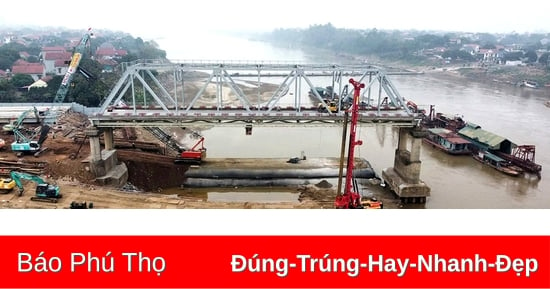
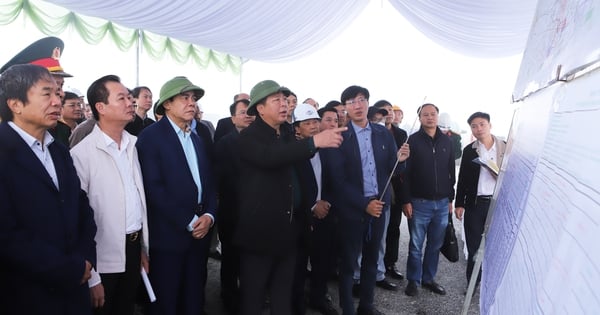

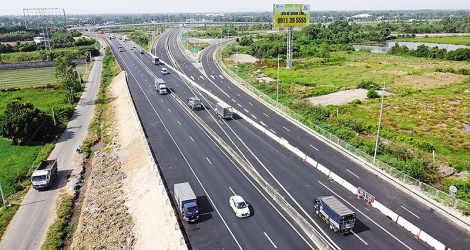

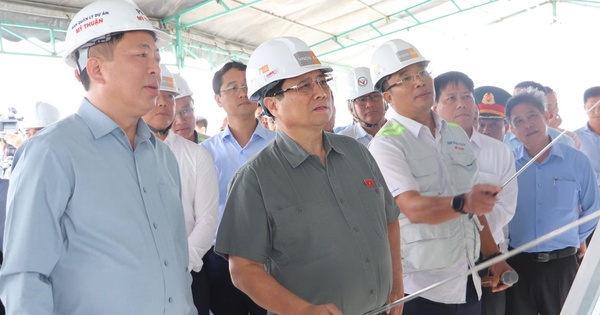
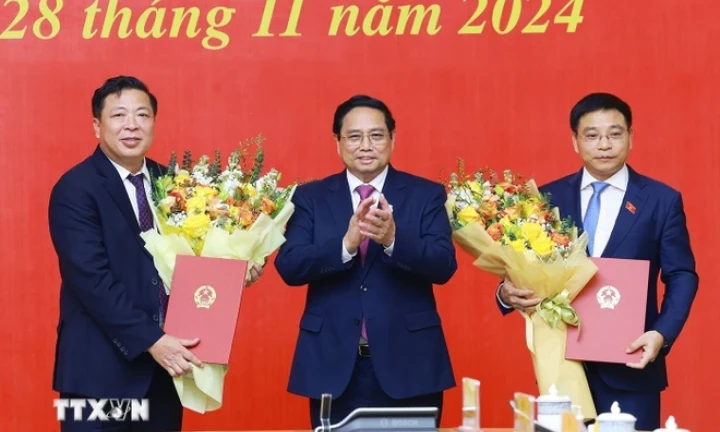
































Comment (0)